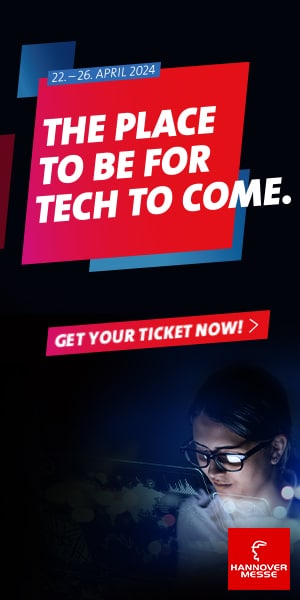Cities were on the front line with COVID-19. While some of them were able to plan and manage the situation, others, with dense populations and overcrowded transportation, experienced a tougher outbreak. Yet, according to experts, the situation is a catalyst for change. How will COVID-19 change the way we make cities in the future? How can digital tools help cities cope with the next unforeseen event?
“COVID-19 was a horrific event for cities, especially for my hometown, New York City, which has been a hotbed for the virus,” said Lou Celi, CEO at ESI ThoughtLab, during Bentley Systems’ online panel discussion about cities and resilience. Last week, the infrastructure software provider gathered a group of experts and city planners to discuss the future of cities and how the pandemic might change the way we make them.
All participants agreed on one thing: the pandemic is changing the way we live and work in the cities. There is a before and an after COVID-19. And this pandemic will eventually change how cities look in the future.

The Role of Digital Twins
Jamie Cudden is the Smart City program Manager in Dublin. He explained how the Irish capital coped with the outbreak.
“We saw massive resilience across the public and private sectors when all of a sudden everyone had to work from home. And that was thanks to the IT teams who made that happen pretty seamlessly and almost overnight. It took a pandemic for our organization, Dublin city council, to move to an official remote working policy. All our digital transformation programs were activated overnight. And in the space of days, we were up and running to keep critical services operating in the cities. “
If some cities were able to continue operations and maintain public services, it is thanks to technology and to the Cloud which enabled remote working. For the panelists, in the future, digital tools are expected to play a bigger role, particularly for risk planning and scenarios analysis, explains Kirk Arthur, Sr. Director, Worldwide Public Safety & Justice at Microsoft.
“Cloud technology enabled governments around the world to stand up and, in a matter of days, enable their capabilities. There will be a second wave, so how will we build resilience? We think digital twin technology will help cities model, prepare for and anticipate the next wave’s problems but also natural disasters.”

Digital twins are virtual replicas of physical systems, processes and products. They help understand and model their performance. At a city scale, digital twins help manage different complicated physical systems, above or below the ground and across their lifecycle, from design and planning to construction and operations. Helsinki is one of the few cities that already has its digital representation which was made with Bentley Systems software ContextCapture.
For Jarmo Suomisto, project manager at the City of Helsinki,
“We have excellent city models and an open data platform. We are happy that we have a platform based on AI, so that we can visualize, understand and analyze what’s happening, where and why. It is helping in this situation.”
Building Resilience

For Robert Mankowski, VP of digital cities at Bentley Systems, digital twins will become a crucial tool for future smart cities.
“I can’t predict the future, but what I can say is that digital twins can help inform decision makers. If you are looking at mobility systems and how they are going to need to adapt to the changing behavior of people, you need data from the different cities systems and a place to visualize it to help you make those tough decisions, what actions to take, what their impact will be. This is what digital twinning helps do. When we think about resilience and digital cities, we think about 3 phases of the life cycle of the asset: a) the readiness (preparing buildings for the unexpected), b) responding to that unforeseen event when it does occur, and c), after the event, recovering. With a digital twin, you can really understand your risks, you can calculate the probability of something happening and its consequences.”
For Jamie Cudden from Dublin,
“With the pandemic, people realize the importance of real time data to assess the impact of lockdown and reopening and the changes in infrastructure investments. It has never been more important to have access to that data (people flow, cars flow) to make smart decisions, to know how we use public space, how we move people around the cities. I think there is going to be an increase in demand for those types of capabilities within the cities.”
Social distancing is one of the new requirements for cities, and digital twins can be used to analyze the effects of social distancing in facilities like railway stations and airports. The crisis has revealed that we cannot crowd people anymore. Tools like LEGION help simulate and analyze pedestrian movements within a defined space, such as a transportation center, tall building, or any place where people gather.

For Eduardo Lazzarotto, Director of Product Management at Bentley Systems,
“To simulate people, what we’ve done over the years is install cameras in places like stations, airports, stadiums all over the world. And we have collected real time data (the speed of people walking, how do they avoid each other, how do they take an escalator…).The biggest question that is in our minds now is how to collect and use data to create the behavior of social distancing. At the moment, there isn’t a consensus on that behavior. Will social distancing perpetuate and remain moving forward or not? For how long? Years or decades? It is difficult to say right now, but simulations can evolve together with that behavior. Once we have more documentation, we will be able to create social distancing models within our software. And this could change the way we look into the planning of cities and also of buildings ”
Creating smart and digital cities was already a necessary move before the crisis. The pandemic has just accelerated the trend. In the future, taking into account how people behave in a public space will be increasingly important in the planning of cities and buildings.











